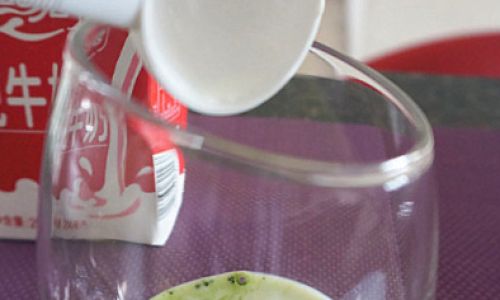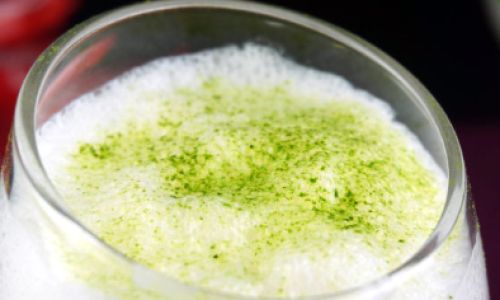Introduction
The world of beverages is vast and ever-evolving, with countless combinations and variations catering to diverse tastes and preferences. Among the myriad of drinks available, milk tea stands out as a beloved staple across numerous cultures, offering a delightful blend of tea, milk, and often sweeteners and flavors. Traditionally, black tea has been the go-to choice for crafting milk tea due to its robust flavor and ability to blend well with milk. However, as the trend of health-conscious consumption gains momentum, many individuals are exploring alternative tea types, such as green tea, to infuse their milk tea with. This article delves into the question: Can green tea leaves be used to brew milk tea? We will explore the nuances of green tea, its potential in milk tea creation, the impact on taste, health benefits, and practical tips for brewing the perfect green tea milk tea.
Understanding Green Tea
Green tea, derived from the Camellia sinensis plant, is a type of tea that undergoes minimal oxidation during processing. This preservation of natural enzymes and antioxidants gives green tea its distinct flavor profile and health benefits. Unlike black tea, which is fully oxidized, green tea leaves are either steamed or pan-fired immediately after harvesting to halt the oxidation process. This results in a lighter, more vegetal flavor with subtle notes of grass and earth.
Green tea is renowned for its high content of catechins, particularly epigallocatechin gallate (EGCG), which are powerful antioxidants that contribute to its health-promoting properties. Regular consumption of green tea has been associated with a range of benefits, including improved cardiovascular health, enhanced cognitive function, and aid in weight management. Its subtle, refreshing taste makes it a popular choice for those seeking a lighter alternative to coffee or black tea.

The Traditional Role of Black Tea in Milk Tea
Traditionally, black tea has been the cornerstone of milk tea due to its strong, bold flavor that stands up well to the addition of milk and sweeteners. Black tea’s oxidation process leads to the development of complex flavors, including malty, smoky, and fruity notes, which harmonize beautifully with dairy and various toppings. The robust nature of black tea ensures that even when diluted with milk, its distinctive character remains prominent, providing a satisfying and indulgent drinking experience.
Exploring the Possibility of Green Tea Milk Tea
Despite black tea’s dominance in the milk tea realm, the advent of health-conscious consumption patterns has sparked curiosity about using green tea as a base. The appeal of green tea lies in its natural, unprocessed qualities and the myriad of health benefits it offers. However, integrating green tea into milk tea presents unique challenges and considerations.
Flavor Profile and Compatibility

Green tea’s delicate, vegetal flavor can be overpowered by the richness of milk, particularly if not balanced correctly. The subtle notes of grass and earth in green tea might not be as appealing to those accustomed to the malty, creamy profile of black tea-based milk tea. Therefore, achieving a harmonious blend requires careful attention to the ratio of green tea to milk, as well as the choice of milk type and any additional flavors or sweeteners.
Brewing Techniques for Green Tea Milk Tea
-
Temperature Control: Green tea is sensitive to high temperatures, which can result in bitterness. It is crucial to use water that is slightly cooler than what is typically used for black tea (around 70-80°C instead of boiling). This preserves the delicate flavors and antioxidants of green tea.
-
Steeping Time: The duration of steeping also plays a vital role. Over-steeping green tea can lead to a bitter taste. Generally, a steeping time of 1-2 minutes is ideal for green tea leaves. Adjust this based on personal preference and the specific type of green tea being used.
-
Milk Choice: The type of milk used can significantly impact the final flavor. Whole milk or cream provides a richer, creamier texture but may mask the green tea’s subtle notes. Alternatively, using plant-based milks like almond milk, oat milk, or soy milk can enhance the green tea’s natural flavors while catering to dietary restrictions or preferences.

-
Sweeteners and Flavors: Adding a touch of honey, maple syrup, or agave nectar can balance the bitterness of green tea and enhance its sweetness. Furthermore, incorporating complementary flavors such as vanilla, cinnamon, or cardamom can elevate the complexity of the drink and make it more appealing to a wider audience.
Health Benefits of Green Tea Milk Tea
While traditional milk tea, especially those made with black tea and high-fat dairy, can be high in calories and sugar, green tea milk tea offers a healthier alternative. The antioxidants present in green tea, particularly EGCG, contribute to its anti-inflammatory and antioxidant properties. These compounds may help reduce the risk of chronic diseases, improve cardiovascular health, and support weight management.
Moreover, using plant-based milks can further enhance the nutritional profile of green tea milk tea. For instance, almond milk is low in calories and saturated fats while providing essential vitamins and minerals. Oat milk, on the other hand, is rich in beta-glucan, a soluble fiber that supports heart health and aids in blood sugar control.
Practical Tips for Brewing the Perfect Green Tea Milk Tea

-
Experiment with Different Green Tea Types: There are various types of green tea, each with its unique flavor profile. Matcha, for instance, has a rich, earthy flavor and a silky texture that pairs well with milk. Sencha offers a fresh, grassy taste, while gyokuro is sweeter and more delicate. Experimenting with different types can help you find the one that best suits your milk tea preferences.
-
Adjust the Ratio: Start with a lower ratio of green tea to milk and gradually adjust based on taste. This ensures that the green tea’s flavor is not overwhelmed by the milk.
-
Use Quality Ingredients: Investing in high-quality green tea leaves and fresh milk or plant-based alternatives will yield a superior drinking experience.
-
Add a Twist: Incorporate fresh fruit, herbs, or spices to create unique flavors. For example, adding a slice of lemon or a sprig of mint can brighten up the drink and add a refreshing twist.
Conclusion

In conclusion, while green tea presents unique challenges when used as a base for milk tea due to its delicate flavor profile, with careful consideration and experimentation, it can indeed be transformed into a delightful and healthy beverage. By controlling brewing temperatures, steeping times, and choosing the right milk and sweeteners, you can create a green tea milk tea that balances the natural flavors of green tea with the creamy richness of milk. Moreover, the health benefits associated with green tea make it a compelling alternative to traditional black tea-based milk tea. As the trend of health-conscious consumption continues to grow, exploring innovative ways to incorporate green tea into popular beverages like milk tea will undoubtedly gain traction. So, the next time you’re craving a refreshing and nutritious drink, consider giving green tea milk tea a try – you might be surprised by how well it can satisfy your taste buds while nourishing your body.





0 comments